By introducing an auxiliary parameter, the dynamic of RLC electrical circuits of non-integer order is described by a fractional order differential equation. The order of derivative in the component models is assumed to be zhongwenzy \lt \gamma\leq 1$. The time and frequency domain characteristics of the circuit is investigated, and it is shown that three different filter characteristics of low-pass, high-pass and band-pass filters are obtained. The filter parameters are determined analytically, and the results are verified numerically.
1.
Introduction
The notion of lightlike submanifolds was introduced by K. L. Duggal and A. Bejancu in [1]. The study of lightlike submanifolds is remarkably more interesting due to non-trivial intersection of normal vector bundle and tangent bundle. Many geometers enriched the study of lightlike submanifolds (see [2,3]). B. Y. Chen [4] defined and studied slant submanifolds of an almost Hermitian manifold as generalization of complex submanifolds and totally real submanifolds for which the angle Ψ between ¯ϱζ and the tangent space is constant for any tangent vector field ζ. A. Lotta [5] investigated the concept of slant submanifolds in contact geometry. B. Sahin [6] studied slant submanifolds of an almost product Riemannian manifold. J. L. Cabrerizo et al. [7] analysed slant submanifolds of a Sasakian manifold. M. A. Khan et al. [8] introduced slant submanifolds in LP-contact manifolds. N. Papaghuic [9] introduced the notion of semi-slant submanifolds of Kaehler manifold. P. Alegre and A. Carriazo [10] introduced and studied bi-slant submanifolds of a para Hermitian manifold. On the other hand, Crasmareanu and Hretcanu [11,12] define golden structure ¯ϱ as a (1, 1) tensor-field satisfying ¯ϱ2=¯ϱ+I. A Riemannian manifold ¯O with a golden structure ¯ϱ is called almost golden Riemannian manifold. M. A. Qayyoom and M. Ahmad (see [13,14,15]) studied hypersurfaces, warped product skew semi-invariant submanifolds, skew semi-invariant submanifolds of a golden Riemannian manifold. They also studied submanifolds of locally metallic Riemannian manifolds [16]. B. Sahin [17] studied slant lightlike submanifolds of indefinite Hermitian manifolds. R. S. Gupta and A. Sharfuddin [18] studied slant lightlike submanifolds of indefinite Kenmotsu manifolds. J. W. Lee and D. H. Jin [19] studied slant lightlike submanifolds of an indefinite Sasakian manifold. Semi-slant submanifolds were defined and studied by V. Khan et al. [20]. Thereafter, many geometers studied semi-slant submanifolds in various spaces (see [21,22,23]). Moreover, many authors studied geometry of bi-slant lightlike submanifolds [24,25]. N. Poyraz and E. Yasar [3] studied lightlike submanifolds of golden semi-Riemannian manifolds. S. Kumar and A. Yadav [26] studied semi-slant lightlike submanifolds of golden semi-Riemannian manifolds. Johnson and Whitt studied foliations that has great importance in diffrential geometry, they considered each leaf of the foliation to be a totally geodesic submanifold of the ambient space [27].
In this paper, we introduce bi-slant lightlike submanifolds of golden semi-Riemannian manifolds. The paper is organized as follows: In Section 2, we define golden semi-Riemannian manifolds and present some basic concepts of lightlike submanifolds. In Section 3, we define and investigate some results on bi-slant lightlike submanifolds of golden semi-Riemannian manifolds and give two examples. We also discuss the integrability conditions of distributions on bi-slant lightlike submanifolds. In the last section, we obtain necessary and sufficient conditions for foliations determined by distributions on bi-slant lightlike submanifolds of golden semi-Riemannian manifolds to be geodesic.
2.
Basic concepts
Let (¯O,g) be a semi-Riemannian manifold. A golden structure on (¯O,g) is a non-null tensor ¯ϱ of type (1, 1) which satisfies the equation
where I is the identity transformation. We say that the metric g is ¯ϱ-compatible if
for all ζ, η vector fields on ¯O. If we substitute ¯ϱζ into ζ in (2.2), then we have
The semi-Riemannian metric is called ¯ϱ-compatible and (¯O,¯ϱ,g) is called a golden semi-Riemannian manifold. Also, if
for all ζ,η∈Γ(TO), where ¯∇ is the Levi-Civita connection with respect to g, then (¯O,¯ϱ,g) is called a locally golden semi-Riemannian manifold.
A submanifold (Om,g) immersed in a semi-Riemannian manifold (¯Om+n,¯g) is called a lightlike submanifold if the metric g induced from ¯g is degenerate and the radical distribution Rad(TO) is of rank r, where 1≤r≤m. Let S(TO) be a screen distribution which is a semi-Riemannian complementary distribution of Rad(TO) in TO, i.e., TO=Rad(TO)⊥S(TO).
Consider a screen transversal vector bundle S(TO⊥), which is a semi-Riemannian complementary vector bundle of Rad(TO) in TO⊥. Since, for any local basis {ξi} of Rad(TO), there exists a local null frame {ϖi} of sections with values in the orthogonal complement of S(TO⊥) in [S(TO)]⊥ such that ¯g(ξi,ϖj)=δij, it follows that there exists a lightlike transversal vector bundle ltr(TO) locally spanned by {ϖi}. Let tr(TO) be complementary (but not orthogonal) vector bundle to TO in T¯O|O. Then
A submanifold (O,g,S(TO),S(TO⊥)) of ¯O is said to be
(i) r-lightlike if r<min{m,n};
(ii) Coisotropic if r=n<m,S(TO⊥)={0};
(iii) Isotropic if r=m<n,S(TO)={0};
(iv) Totally lightlike if r=m=n,S(TO)={0}=S(TO⊥).
Let ¯∇, ∇ and ∇t denote the linear connections on ¯O, O and vector bundle tr(TO), respectively. Then the Gauss and Weingarten formulae are given by
where {∇ζη,Aηζ} and {h(ζ,η),∇tζη} belong to Γ(TO) and Γ(ltr(TO)), respectively. ∇ and ∇tζ are linear connections on O and on the vector bundle ltr(TO), respectively. The second fundamental form h is a symmetric F(O)-bilinear form on Γ(TO) with values in Γ(tr(TO)) and the shape operator Aη is a linear endomorphism of Γ(TO). Then we have
and ω∈Γ(S(TO⊥)). Denote the projection of TO on S(TO) by ¯P. Then, by using (2.1), (2.3)–(2.5) and having the fact that ¯∇ is a metric connection we obtain
We set
for ζ,η∈Γ(TO) and ξ∈Γ(RadTO). By using above equations, we obtain
In general, the induced connection ∇ on O is not metric connection. Since ¯∇ is a metric connection, by using (2.3) we get
However, it is important to note that ∇∗ is a metric connection on S(TO). From now on, we briefly denote (O,g,S(TO),S(TO⊥)) by O in this paper.
3.
Bi-slant lightlike submanifolds
To define bi-slant lightlike submanifolds, we require a lemma:
Lemma 3.1. [28] Let O be a q-lightlike submanifold of a golden semi-Riemannian manifold ¯O of index 2q. Suppose there exists a screen distribution S(TO) such that ¯ϱRad(TO)⊂S(TO) and ¯ϱltr(TO)⊂S(TO). Then, ¯ϱRad(TO)⋂¯ϱltr(TO)={0} and any complementary distribution to ¯ϱRad(TO)⊕¯ϱltr(TO) in S(TO) is Riemannian.
Definition 3.1. Let O be a q-lightlike submanifold of a golden semi-Riemannian manifold ¯O of index 2q such that 2q<dim(O). Then, we say that O is a bi-slant lightlike submanifold of ¯O if the following conditions are satisfied:
(i) ¯ϱRad(TO) is a distribution on O such that Rad(TO)⋂¯ϱRadTO={0};
(ii) there exists non-degenerate orthogonal distributions D, D1 and D2 on O such that
(iii) the distribution D is an invariant distribution, i.e., ¯ϱD=D;
(iv) the distribution D1 is slant with angle Ψ1(≠0), i.e., for each ζ∈O and each non-zero vector ζ∈(D1)ζ, the angle Ψ1 between ¯ϱζ and the vector space (D1)ζ is a non-zero constant, which is independent of the choice of ζ∈O and ζ∈(D1)ζ;
(v) the distribution D2 is slant with angle Ψ2(≠0), i.e., for each ζ∈O and each non-zero vector ζ∈(D2)ζ, the angle Ψ2 between ¯ϱζ and the vector space (D2)ζ is a non-zero constant, which is independent of the choice of ζ∈O and ζ∈(D2)ζ.
These constant angle Ψ1 and Ψ2 are called the slant angles of distributions D1 and D2 respectively. A bi-slant lightlike submanifold is said to be proper if D1≠{0},D2≠{0} and Ψ1≠π2, Ψ2≠π2.
From the above definition, we have the following decomposition
In particular, we have
(i) If D=0, and any one of D1 and D2 is zero, then O is a slant lightlike submanifold;
(ii) If D≠0, and any one of D1 and D2 is zero, then O is a semi-slant lightlike submanifold;
(iii) If D≠0 and Ψ1=π2,Ψ2=π2, then O is CR-lightlike submanifold.
Thus, the above new class of lightlike submanifolds of a golden semi-Riemannian manifold includes slant, semi-slant and Cauchy-Riemann lightlike submanifolds as its subcases.
Example 3.1. Let (R162,¯g) be a semi-Euclidean space of signature (−,−,+,+,+,+,+,+,+,+,+,+,+,+,+,+) with respect to the canonical basis {∂ζ1,∂ζ2,∂ζ3,∂ζ4,∂ζ5,∂ζ6,∂ζ7,∂ζ8,∂ζ9,∂ζ10,∂ζ11,∂ζ12,∂ζ13,∂ζ14,∂ζ15,∂ζ16} with the golden structure ¯ϱ defined by
where τ=1+√52 and ¯τ=1−√52 are the roots of ζ2−ζ−1=0. Thus, ¯ϱ2=¯ϱ+I and ¯ϱ is a golden structure on R162.
Let O be a 9-dimensional submanifold of (R162,¯g) given by
Then, TO is spanned by ς1,ς2,ς3,ς4,ς5,ς6,ς7,ς8,ς9, where
This implies that Rad(TO)=span{ς1} and S(TO)=span{ς2,ς3,ς4,ς5,ς6,ς7,ς8,ς9}.
Now, ltr(TO) is spannned by
and S(TO⊥) is spanned by
Now, ¯ϱς1=ς2,¯ϱϖ=ς3 and ¯ϱς4=¯τς4,¯ϱς5=¯τς5, which means D is invariant, i.e., ¯ϱD=D and D=span{ς4,ς5} and D1=span{ς6,ς7},D2=span{ς8,ς9} are slant distributions with slant angles Ψ1=arccos(4√21) and Ψ2=arccos(1+√5√2(3+√5)) respectively. Hence, O is a bi-slant 1-lightlike submanifold of R162.
Example 3.2. Let (R164,¯g) be a semi-Euclidean space of signature (+,+,−,−,+,+,+,+,+,+,+,−,+,+,+,−) with respect to the canonical basis {∂ζ1,∂ζ2,∂ζ3,∂ζ4,∂ζ5,∂ζ6,∂ζ7,∂ζ8,∂ζ9,∂ζ10,∂ζ11,∂ζ12,∂ζ13,∂ζ14,∂ζ15,∂ζ16} with the golden structure ¯ϱ defined by
where τ=1+√52 and ¯τ=1−√52 are the roots of ζ2−ζ−1=0. Thus, ¯ϱ2=¯ϱ+I and ¯ϱ is a golden structure on R164.
Let O be a 9-dimensional submanifold of (R164,¯g) given by
Then, TO is spanned by ς1,ς2,ς3,ς4,ς5,ς6,ς7,ς8,ς9, where
This implies that Rad(TO)=span{ς1} and S(TO)=span{ς2,ς3,ς4,ς5,ς6,ς7,ς8,ς9}.
Now, ltr(TO) is spannned by
and S(TO⊥) is spanned by
Now, ¯ϱς1=ς2,¯ϱϖ=ς3 and ¯ϱς4=τς4,¯ϱς5=¯τς5, which means D is invariant, i.e., ¯ϱD=D and D=span{ς4,ς5} and D1=span{ς6,ς8},D2=span{ς7,ς9} are slant distributions with slant angles Ψ1=arccos(−1√6) and Ψ2=arccos(1−√5√2(3−√5)) respectively. Hence, O is a bi-slant 1-lightlike submanifold of R164.
Further, for any vector field ζ tangent to O, we put
where fζ and Fζ are tangential and transversal parts of ¯ϱζ respectively. We denote the projections on Rad(TO),¯ϱRad(TO),¯ϱltr(TO),D,D1 and D2 in TO by P1,P2,P3,P4,P5 and P6 respectively. Similarly, we denote the projections of tr(TO) on ltr(TO) and S(TO⊥) by Q1 and Q2 respectively. Thus, for any ζ∈Γ(TO), we get
Now, applying ¯ϱ to above, we get
which gives
where ¯ϱP2ζ=K1¯ϱP2ζ+K2¯ϱP2ζ,¯ϱP3ζ=L1¯ϱP3ζ+L2¯ϱP3ζ and fP5ζ,fP6ζ (resp. FP5ζ,FP6ζ) denotes the tangential (resp. transversal) component of ¯ϱP5ζ and ¯ϱP6ζ. Thus, we get ¯ϱP1ζ∈Γ(¯ϱRad(TO)),K1¯ϱP2ζ∈Γ(RadTO),K2¯ϱP2ζ∈Γ(¯ϱRad(TO)),L1¯ϱP3ζ∈Γ(ltr(TO)),L2¯ϱP3ζ∈Γ(¯ϱltr(TO)),¯ϱP4ζ∈Γ(¯ϱD),fP5ζ∈Γ(D1),fP6ζ∈Γ(D2) and FP5ζ,FP6ζ∈Γ(S(TO⊥)). Also, for any ω∈Γ(tr(TO)), we have
Applying ¯ϱ to above, we obtain
which gives
where BQ′2ω,BQ″2ω(resp. CQ′2ω,CQ″2ω) denote the tangential(resp. transversal) component of ¯ϱQ2ω. Thus, we get ¯ϱQ1ω∈Γ(¯ϱltr(TO)),BQ′2ω∈Γ(D1),BQ″2ω∈Γ(D2) and CQ′2ω,CQ″2ω∈Γ(S(TO⊥)).
Theorem 3.2. Let O be a q-lightlike submanifold of a golden semi-Riemannian manifold ¯O of index 2q. Then, O is a bi-slant lightlike submanifold iff
(i) there exist a distribution ¯ϱRad(TO) on O such that Rad(TO)⋂¯ϱRad(TO)={0};
(ii) there exist a screen distribution S(TO) which can be splitted as
such that D is an invariant distribution on O, i.e., ¯ϱD=D;
(iii) there exist a constant κ1∈[0,1) such that f2ζ=κ1(¯ϱ+I)ζ, ∀ζ∈Γ(D1);
(iv) there exist a constant κ2∈[0,1) such that f2ζ=κ2(¯ϱ+I)ζ, ∀ζ∈Γ(D2).
In that case, κ1=cos2Ψ1 and κ2=cos2Ψ2, where Ψ1 and Ψ2 represents the slant angles of D1 and D2 respectively.
Proof. Let O be a bi-slant lightlike submanifold of a golden semi-Riemannian manifold ¯O. Then, the distribution D is invariant with respect to ¯ϱ and ¯ϱRad(TO) is a distribution on O such that Rad(TO)⋂¯ϱRad(TO)={0}.
For any ζ∈Γ(D1), we have
Since, O is a bi-slant lightlike submanifold, cos2Ψ1=κ1 (constant)∈[0,1) and therefore from (3.5), we have
For all ζ∈Γ(D1),
Since, (f2−κ1¯ϱ2)ζ∈Γ(D1) and the induced metric g=g|D1×D1 is non-degenerate (positive definite), from (3.6), we have
This proves (iii).
Suppose for any ζ∈Γ(D2), we have
Now, by using similar steps as in proof of (iii), we obtain
which proves (iv).
Conversely, suppose that conditions (i)–(iv) are satisfied. From (iii), we have f2ζ=κ1¯ϱ2ζ for all ζ∈Γ(D1), where κ1(constant)∈[0,1).
Now,
Using (3.7), we have
Using (3.4), we have
Further, from (iv) we have f2ζ=κ2¯ϱ2ζ for all ζ∈Γ(D2), where κ2(constant)∈[0,1). Now, by proceeding in the same way as above, we get cos2Ψ2=κ2(constant). This completes the proof. Hence, O is a bi-slant lightlike submanifold.
□
Theorem 3.3. Let O be a q-lightlike submanifold of a golden semi-Riemannian manifold ¯O of index 2q. Then, O is a bi-slant lightlike submanifold iff
(i) there exist a distribution ¯ϱRad(TO) on O such that Rad(TO)⋂¯ϱRad(TO)={0};
such that D is an invariant distribution on O, i.e., ¯ϱD=D;
(ii) there exist a constant ν1∈[0,1) such that BFζ=ν1(¯ϱ+I)ζ, ∀ζ∈Γ(D1);
(iii) there exist a constant ν2∈[0,1) such that BFζ=ν2(¯ϱ+I)ζ, ∀ζ∈Γ(D2).
In that case, ν1=sin2Ψ1 and ν2=sin2Ψ2, where Ψ1 and Ψ2 represents the slant angles of D1 and D2, respectively.
Proof. Let O be a bi-slant lightlike submanifold of a golden semi-Riemannian manifold ¯O. Then, the distribution D is invariant with respect to ¯ϱ and ¯ϱRad(TO) is a distribution on O such that Rad(TO)⋂¯ϱRad(TO)={0}.
Now, ∀ vector field ζ∈Γ(D1), we have
where fζ and Fζ represents the tangential and transversal parts of ¯ϱζ respectively. Applying ¯ϱ to (3.10), we get
Now, comparing the tangential components, we get
Since, O is a bi-slant lightlike submanifold, f2ζ=κ1¯ϱ2ζ,∀ζ∈Γ(D1), where κ1(constant)∈[0,1). From (3.11), we get
where 1−κ1=ν1(constant)∈[0,1).
This proves (iii).
Suppose for any ζ∈Γ(D2), we have
where fζ and Fζ are the tangential and transversal parts of ¯ϱζ respectively.
Now, by using similar steps as in proof of (iii), we obtain
where 1−κ2=ν2(constant)∈[0,1).
This proves (iv).
Conversely, suppose that conditions (i)–(iv) are satisfied. From (3.11), we have
where 1−ν1=κ1(constant)∈[0,1).
Furthermore, from (iv) we have BFζ=ν2¯ϱ2ζ, for all ζ∈Γ(D2), where ν2(constant)∈[0,1). Now, by proceeding in the same way as above, we get
where 1−ν2=κ2(constant)∈[0,1). Now, the proof follows from Theorem 3.2.
Hence, O is a bi-slant lightlike submanifold. □
Corollary 3.1. Let O be a bi-slant lightlike submanifold of a golden semi-Riemannian manifold ¯O. Then for any slant distribution D′ of O with slant angle Ψ, we have
∀ζ,η∈Γ(D′).
The proof of the above corollary follows by using similar steps as in the proof of Corollary 3.1 of [17].
Theorem 3.4. Let O be a bi-slant lightlike submanifold of a golden semi-Riemannian manifold ¯O. Then, the integrability of Rad(TO) holds iff
(i) ¯g(hl(ζ,¯ϱη),ξ)=¯g(hl(η,¯ϱζ),ξ);
(ii) ¯g(h∗(ζ,¯ϱη),ϖ)=¯g(h∗(η,¯ϱζ),ϖ);
(iii) ¯g(∇∗ζ¯ϱη−∇∗η¯ϱζ,¯Jς)=¯g(∇∗ζ¯ϱη−∇∗η¯ϱζ,ς);
(iv) ¯g(∇∗ζ¯ϱη−∇∗η¯ϱζ,fς1)+¯g(hs(ζ,¯ϱη)−hs(η,¯ϱζ),Fς1)=¯g(∇∗ζ¯ϱη−∇∗η¯ϱζ,ς1);
(v) ¯g(∇∗ζ¯ϱη−∇∗η¯ϱζ,fς2)+¯g(hs(ζ,¯ϱη)−hs(η,¯ϱζ),Fς2)=¯g(∇∗ζ¯ϱη−∇∗η¯ϱζ,ς2)
∀ζ,η,ξ∈Γ(RadTO),ς∈Γ(D),ς1∈Γ(D1),ς2∈Γ(D2) and ϖ∈Γ(ltr(TO)).
Proof. Let O be a bi-slant lightlike submanifold of a golden semi-Riemannian manifold ¯O. Rad(TO) is integrable iff
∀ζ,η,ξ∈Γ(RadTO),ς∈Γ(D),ς1∈Γ(D1),ς2∈Γ(D2) and ϖ∈Γ(ltr(TO)).¯∇ being a metric connection and using (2.3),(2.6),(2.9) and (3.1), we obtain
Now, the proof follows from (3.17)–(3.21). □
Theorem 3.5. Let O be a bi-slant lightlike submanifold of a golden semi-Riemannian manifold ¯O. Then, the integrability of ¯ϱRad(TO) holds iff
(i) ¯g(hl(¯ϱζ,η)−hl(¯ϱη,ζ),¯ϱξ)=−¯g(hl(¯ϱζ,η)−hl(¯ϱη,ζ),ξ);
(ii) ¯g(A∗ζ¯ϱη,¯ϱς)=¯g(A∗η¯ϱζ,¯ϱς);
(iii) ¯g(A∗ζ¯ϱη−A∗η¯ϱζ,fς1)=¯g(hs(¯ϱη,ζ)−hs(¯ϱζ,η),Fς1);
(iv) ¯g(A∗ζ¯ϱη−A∗η¯ϱζ,fς2)=¯g(hs(¯ϱη,ζ)−hs(¯ϱζ,η),Fς2);
(v) ¯g(Aϖ¯ϱζ,¯ϱη)=¯g(Aϖ¯ϱη,¯ϱζ)
∀ζ,η,ξ∈Γ(RadTO),ς∈Γ(D),ς1∈Γ(D1),ς2∈Γ(D2) and ϖ∈Γ(ltr(TO)).
Proof. Let O be a bi-slant lightlike submanifold of a golden semi-Riemannian manifold ¯O. ¯ϱRad(TO) is integrable iff
∀ζ,η,ξ∈ΓRad(TO),ς∈Γ(D),ς1∈Γ(D1),ς2∈Γ(D2) and ϖ∈Γ(ltr(TO)).¯∇ being a metric connection and using (2.3),(2.6),(2.7),(2.10) and (3.1), we obtain
Now, the proof follows from (3.22)–(3.26). □
Theorem 3.6. Let O be a bi-slant lightlike submanifold of a golden semi-Riemannian manifold ¯O. Then, the integrability of ¯ϱltr(TO) holds iff
(i) ¯g(Aϖ1¯ϱϖ2−Aϖ2¯ϱϖ1,¯ϱϖ)=−¯g(Aϖ1¯ϱϖ2−Aϖ2¯ϱϖ1,ϖ);
(ii) ¯g(Aϖ1¯ϱϖ2,¯ϱς)=¯g(Aϖ2¯ϱϖ1,¯ϱς);
(iii) ¯g(Aϖ1¯ϱϖ2−Aϖ2¯ϱϖ1,fς1)=¯g(Ds(¯ϱϖ2,ϖ1)−Ds(¯ϱϖ1,ϖ2),Fς1);
(iv)¯g(Aϖ1¯ϱϖ2−Aϖ2¯ϱϖ1,fς2)=¯g(Ds(¯ϱϖ2,ϖ1)−Ds(¯ϱϖ1,ϖ2),Fς2);
(v) ¯g(Aϖ¯ϱϖ1,¯ϱϖ2)=¯g(Aϖ¯ϱϖ2,¯ϱϖ1)
∀ϖ1,ϖ2,ϖ∈Γ(ltr(TO)),ς∈Γ(D),ς1∈Γ(D1) and ς2∈Γ(D2).
Proof. Let O be a bi-slant lightlike submanifold of a golden semi-Riemannian manifold ¯O. ¯ϱltr(TO) is integrable iff
∀ϖ1,ϖ2,ϖ∈Γ(ltr(TO)),ς∈Γ(D),ς1∈Γ(D1) and ς2∈Γ(D2).¯∇ being a metric connection and using (2.3),(2.6),(2.7),(2.9) and (3.1), we obtain
The proof follows from (3.27)–(3.31). □
Theorem 3.7. Let O be a bi-slant lightlike submanifold of a golden semi-Riemannian manifold ¯O. Then, the integrability of D holds iff
(i) ¯g(∇∗ζ¯ϱη−∇∗η¯ϱζ,fς1)+¯g(hs(ζ,¯ϱη)−hs(η,¯ϱζ),Fς1)=¯g(∇∗ζ¯ϱη−∇∗η¯ϱζ,ς1);
(ii) ¯g(∇∗ζ¯ϱη−∇∗η¯ϱζ,fς2)+¯g(hs(ζ,¯ϱη)−hs(η,¯ϱζ),Fς2)=¯g(∇∗ζ¯ϱη−∇∗η¯ϱζ,ς2);
(iii) ¯g(∇∗ζ¯ϱη−∇∗η¯ϱζ,¯ϱϖ)=¯g(h∗(ζ,¯ϱη)−h∗(η,¯ϱζ),ϖ);
(iii) ¯g(Aϖζ,¯ϱη)=¯g(Aϖη,¯ϱζ); ∀ζ,η∈Γ(D),ς1∈Γ(D1),ς2∈Γ(D2) and ϖ∈Γ(ltr(TO)).
Proof. Let O be a bi-slant lightlike submanifold of a golden semi-Riemannian manifold ¯O. D is integrable iff
∀ζ,η∈Γ(D),ς1∈Γ(D1),ς2∈Γ(D2) and ϖ∈Γ(ltr(TO)).
¯∇ being a metric connection and using (2.3),(2.6),(2.7),(2.9) and (3.1), we obtain
The proof follows from (3.32)–(3.35). □
Theorem 3.8. Let O be a bi-slant lightlike submanifold of a golden semi-Riemannian manifold ¯O. Then, any slant distribution D′ (in particular D1,D2) is integrable iff
(i) ¯g(∇ζfη−AFηζ,¯ϱς)+¯g(∇ηfζ−AFζη,ς)=¯g(∇ζfη−AFηζ,ς)+¯g(∇ηfζ−AFζη,¯ϱς);
(ii) ¯g(∇ζfη−AFηζ,¯ϱϖ)+¯g(∇ηfζ−AFζη,ϖ)=¯g(∇ζfη−AFηζ,ϖ)+¯g(∇ηfζ−AFζη,¯ϱϖ);
(iii) ¯g(∇ζfη−AFηζ,ϖ)=¯g(∇ηfζ−AFζη,ϖ);
∀ζ,η∈Γ(D′) (in particular Γ(D1),Γ(D2)), ς∈Γ(D) and ϖ∈Γ(ltr(TO)).
Proof. Let O be a bi-slant lightlike submanifold of a golden semi-Riemannian manifold ¯O. D′ is integrable iff
∀ζ,η∈Γ(D′) (in particular Γ(D1),Γ(D2)), ς∈Γ(D) and ϖ∈Γ(ltr(TO)). Then, from (2.3),(2.6),(2.8) and (3.1), we obtain
The proof follows from (3.36)–(3.38). □
4.
Foliations determined by distributions
This section includes the necessary and sufficient conditions for foliations determined by distributions on a bi-slant lightlike submanifold of a golden semi-Riemannian manifold to be totally geodesic.
Definition 4.1. [2] A bi-slant lightlike submanifold O of a golden semi-Riemannian manifold ¯O is said to be mixed geodesic if its second fundamental form h satisfies h(ζ,η)=0 for all ζ∈Γ(D1) and η∈Γ(D2). Thus, O is a mixed geodesic bi-slant lightlike submanifold if hl(ζ,η)=0 and hs(ζ,η)=0 for all ζ∈Γ(D1) and η∈Γ(D2).
Theorem 4.1. Let O be a bi-slant lightlike submanifold of a golden semi-Riemannian manifold ¯O. Then, Rad(TO) defines a totally geodesic foliation iff
∀ζ,η∈Γ(Rad(TO)) and ς∈Γ(S(TO)).
Proof. Let O be a bi-slant lightlike submanifold of a golden semi-Riemannian manifold ¯O. The distribution Rad(TO) defines a totally geodesic foliation iff ∇ζη∈Γ(Rad(TO))∀ζ,η∈Γ(Rad(TO). ¯∇ being a metric connection and using (2.3), (2.6), (2.7), (2.8) and (3.1) ∀ζ,η∈Γ(Rad(TO) and ς∈Γ(S(TO)), we get
Thus, the theorem is completed.
□
Theorem 4.2. Let O be a bi-slant lightlike submanifold of a golden semi-Riemannian manifold ¯O. Then, D defines a totally geodesic foliation iff
(i) ¯g(∇ζfς−AFςζ,¯ϱη)=¯g(∇ζfς−AFςζ,η);
(ii) ¯g(∇∗ζ¯ϱη,¯ϱϖ)=¯g(h∗(ζ,¯ϱη),ϖ);
(iii) h∗(ζ,¯ϱη) has no components in Γ(Rad(TO))
∀ζ,η∈Γ(D), ς∈Γ(D′)(in particular Γ(D1),Γ(D2)) where D′ is any slant distribution and ϖ∈Γ(ltr(TO)).
Proof. Let O be a bi-slant lightlike submanifold of a golden semi-Riemannian manifold ¯O. The distribution D defines a totally geodesic foliation iff ∇ζη∈Γ(D), ∀ζ,η∈Γ(D). ¯∇ being a metric connection and using (2.3), (2.6), (2.8) and (3.1), ∀ζ,η∈Γ(D) and ς∈Γ(D′), we obtain
Now, from (2.3),(2.6) and (2.9), ∀ζ,η∈Γ(D) and ϖ∈Γ(ltr(TO)), we obtain
Also, from (2.2),(2.6) and (2.9), ∀ζ,η∈Γ(D) and ϖ∈Γ(ltr(TO)), we obtain
which implies
which completes the proof. □
Theorem 4.3. Let O be a bi-slant lightlike submanifold of a golden semi-Riemannian manifold ¯O. Then, the slant distribution D′(in particular D1,D2) defines a totally geodesic foliation iff
(i) ¯g(fη,∇ζ¯ϱς)+¯g(Fη,hs(ζ,¯ϱς))=¯g(∇ζ¯ϱς,η);
(ii) ¯g(∇ζfη−AFηζ,¯ϱϖ)=¯g(∇ζfη−AFηζ,ϖ);
(iii) ∇ζfη−AFηζ has no components in Γ(Rad(TO))
∀ζ,η∈Γ(D′) (in particular Γ(D1),Γ(D2)), ς∈Γ(D) and ϖ∈Γ(ltr(TO)).
Proof. Let O be a bi-slant lightlike submanifold of a golden semi-Riemannian manifold ¯O. The distribution D′ defines a totally geodesic foliation iff ∇ζη∈Γ(D′)∀ζ,η∈Γ(D′). ¯∇ being a metric connection and using (2.3), (2.6) and (3.1), ∀ζ,η∈Γ(D′) and ς∈Γ(D), we obtain
which implies
Now, from (2.3), (2.6), (2.8) and (3.1), ∀ζ,η∈Γ(D′) and ϖ∈Γ(ltr(TO)), we obtain
which implies
Now, from (2.2), (2.6), (2.8) and (3.1), ∀ζ,η∈Γ(D′) and ϖ∈Γ(ltr(TO)), we obtain
which gives
This completes the proof.
□
Theorem 4.4. Let O be a mixed geodesic bi-slant lightlike submanifold of a golden semi-Riemannian manifold ¯O. Then, the slant distribution D′(in particular D1,D2) defines a totally geodesic foliation iff
(i) ¯g(fη,∇ζ¯ϱς)=¯g(η,∇ζ¯ϱς);
(ii) ¯g(∇ζ¯ϱϖ,fη)+¯g(hs(ζ,¯ϱϖ),Fη)=¯g(∇ζ¯ϱϖ,η);
(iii) ∇ζfη−AFηζ has no components in Γ(Rad(TO))
∀ζ,η∈Γ(D′) (in particular Γ(D1),Γ(D2)), ς∈Γ(D) and ϖ∈Γ(ltr(TO)).
Proof. Let O be a mixed geodesic bi-slant lightlike submanifold of a golden semi-Riemannian manifold ¯O, we have hs(ζ,¯ϱς)=0, ∀ζ∈Γ(D′) and ς∈Γ(D). The distribution D′ defines a totally geodesic foliation iff ∇ζη∈Γ(D′). ¯∇ being a metric connection and using (2.3), (2.6) and (3.1), ∀ζ,η∈Γ(D′) and ς∈Γ(D), we obtain
which implies
From (2.3), (2.6) and (3.1), ∀ζ,η∈Γ(D′) and ϖ∈Γ(ltr(TO)), we obtain
which implies
Now, from (2.2), (2.6), (2.8) and (3.1), ∀ζ,η∈Γ(D′) and ϖ∈Γ(ltr(TO)), we obtain
which gives
This completes the proof.
□
Theorem 4.5. Let O be a bi-slant lightlike submanifold of a golden semi-Riemannian manifold ¯O. Then, O is mixed geodesic iff the following holds
(i) F(∇ζfς−AFςζ)=−C(hs(ζ,fς)+∇sζFς);
(ii) hl(ζ,fς)+Dl(ζ,Fς)=hs(ζ,fς)+∇sζFς
∀ζ∈Γ(D) and ς∈Γ(D′) (in particular Γ(D1),Γ(D2)).
Proof. From (2.5), (2.6), (2.8), (3.1), (3.2) and (3.3), we obtain
Taking transversal part of above equation, we get
Hence, h(ζ,ς)=0, iff (i) and (ii) hold, which completes the proof. □
5.
Conclusions
We investigate some interesting results on bi-slant lightlike submanifolds of golden semi-Riemannian manifolds and give two examples on such submanifolds. We also discuss the integrability of distributions on bi-slant lightlike submanifolds. Certain conditions on foliations determined by distributions on bi-slant lightlike submanifolds of golden semi-Riemannian manifolds are derived.
Use of AI tools declaration
The authors declare they have not used Artificial Intelligence (AI) tools in the creation of this article.
Acknowledgments
The authors are grateful to the referees and the editor for their valuable suggestions and remarks that definitely improve the paper. The author, Fatemah Mofarreh, expresses her gratitude to Princess Nourah bint Abdulrahman University Researchers Supporting Project number (PNURSP2023R27), Princess Nourah bint Abdulrahman University, Riyadh, Saudi Arabia. The authors Muqeem Ahmad and Mobin Ahmad would like to thank Integral University, Lucknow, India, for providing the manuscript number IU/R & D/2022-MCN0001737 for the present research work.
Conflict of interest
The authors declare no conflict of interest.











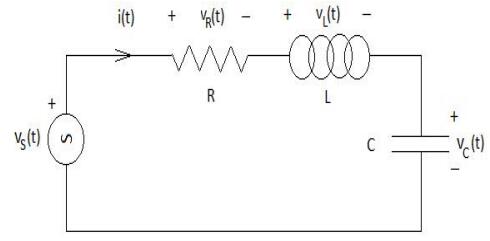
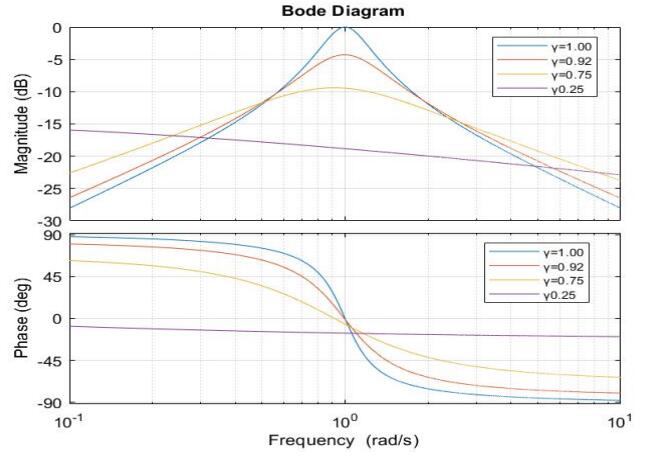
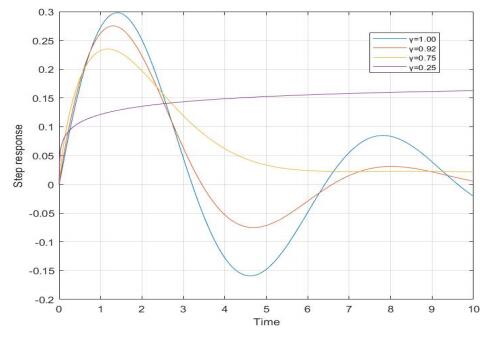
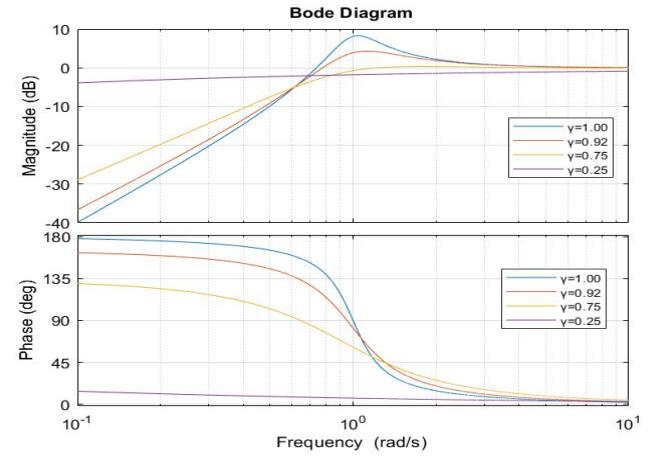
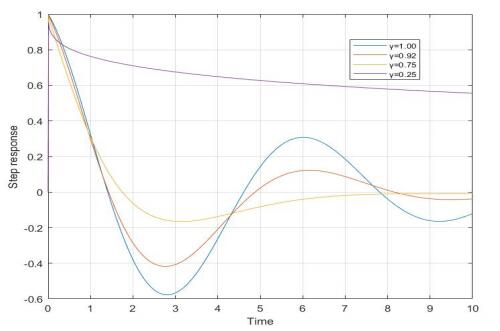
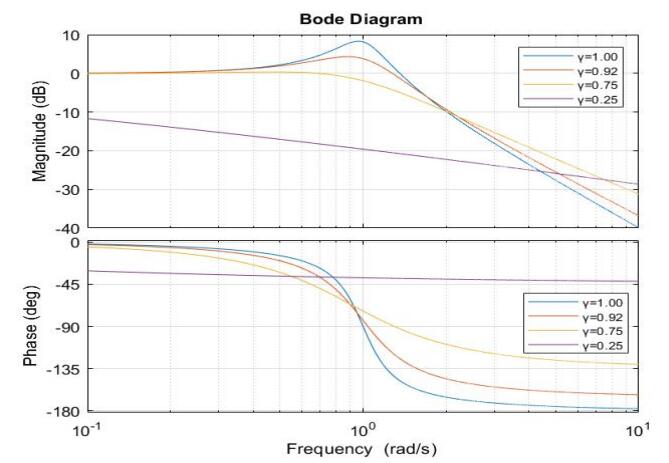
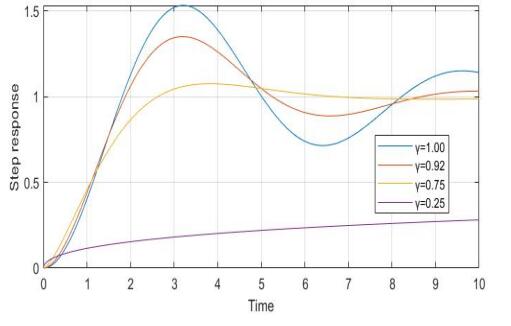
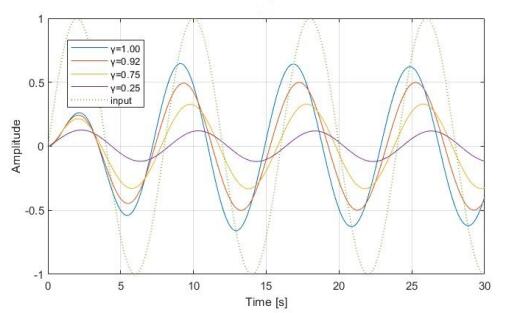
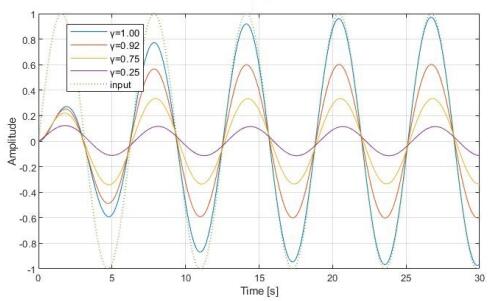
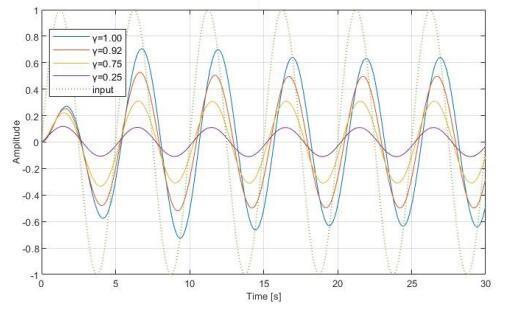
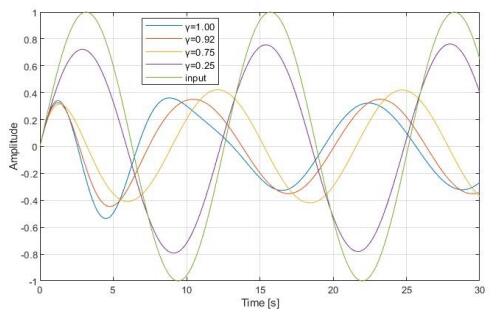
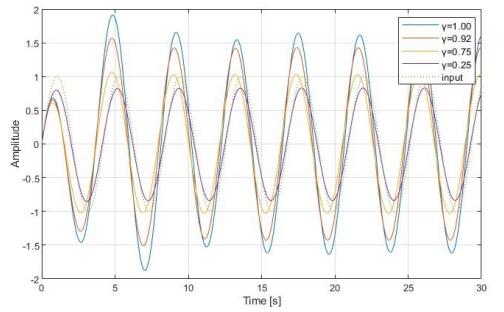
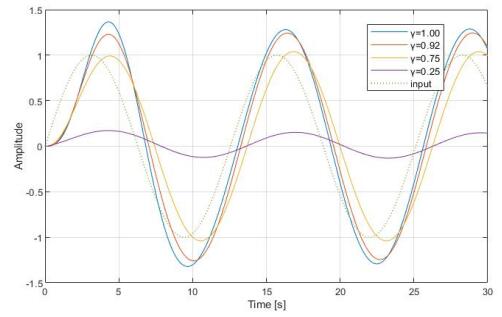


 DownLoad:
DownLoad: